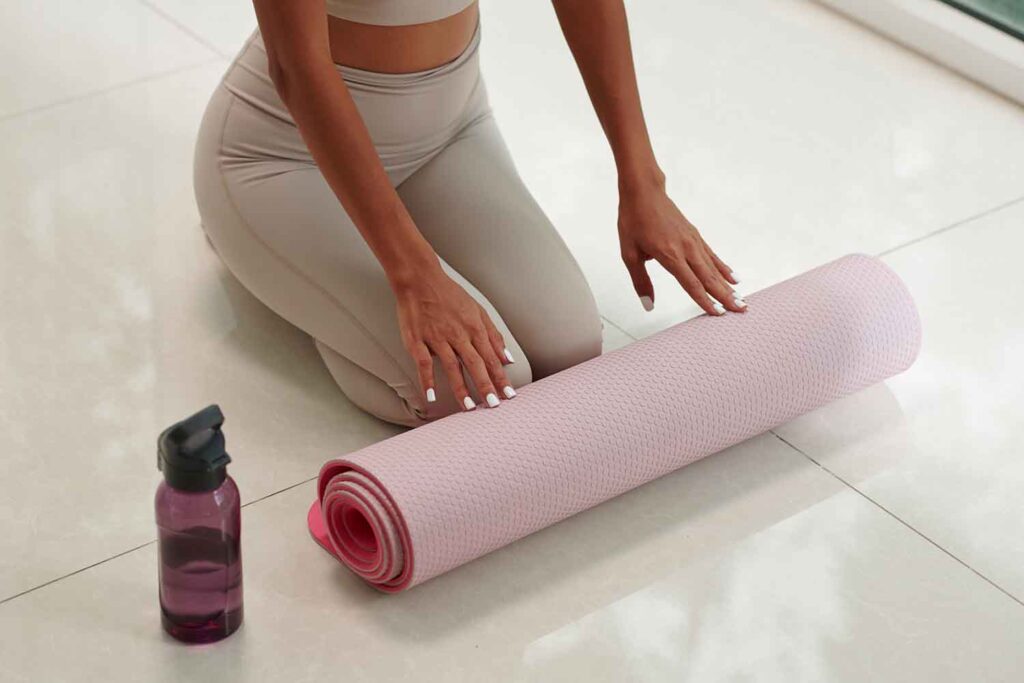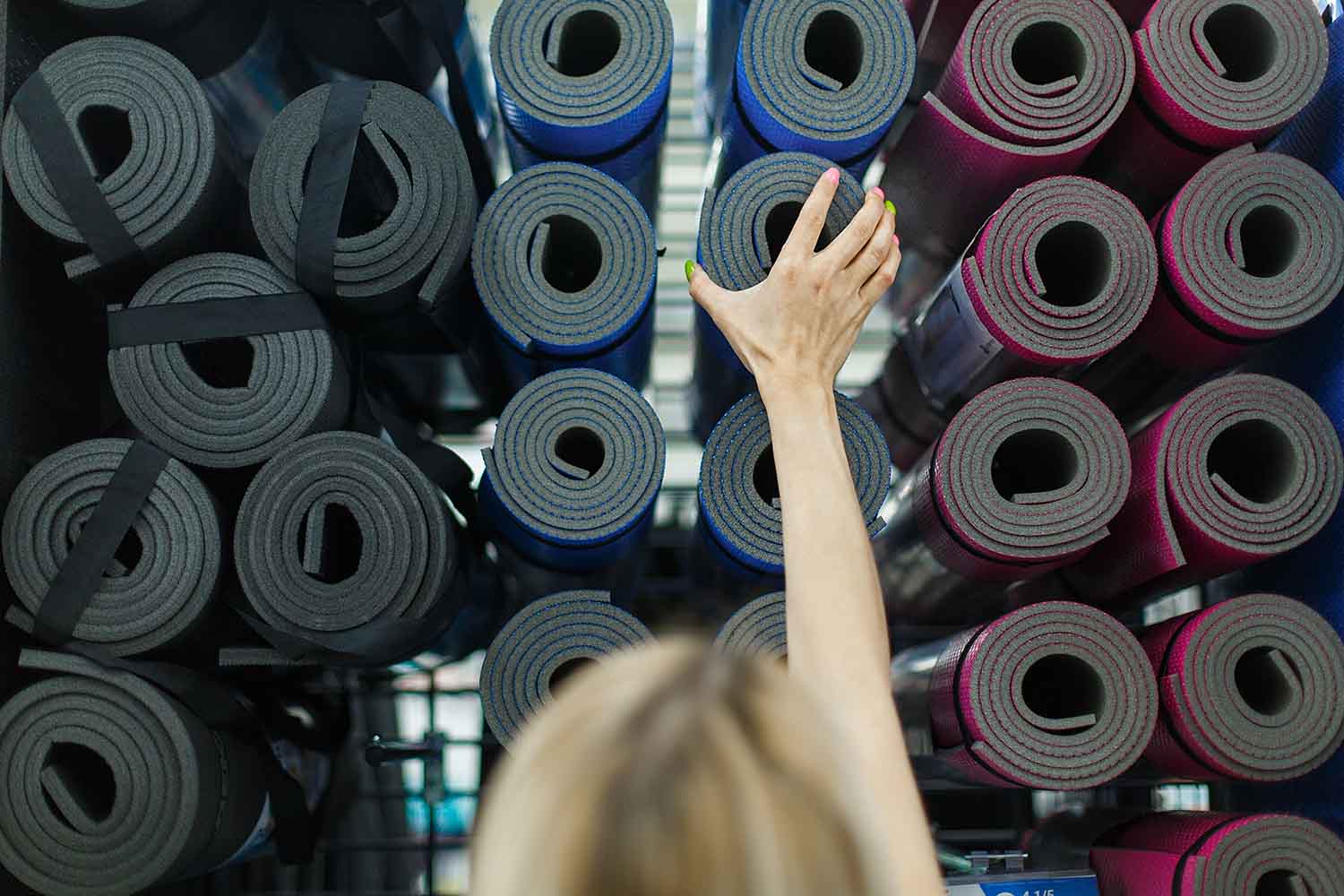Having practiced yoga in countless studios and tried a variety of mats, I’ve learned that choosing the right yoga mat thickness can make a world of difference in your practice. The thickness of a mat directly affects your stability, cushioning, and overall comfort. Too thin, and you’ll feel the floor during seated poses. Too thick, and you might lose balance in standing postures. Finding the right thickness depends on your practice style, joint support needs, and how often you hit the mat. This guide will help you discover the ideal thickness for your yoga mat, whether you need extra support or prefer portability.
Why Thickness Matters in Yoga Mats
The thickness of your yoga mat can significantly influence your practice. A thicker mat provides more cushioning, which can be helpful for those with sensitive joints or when performing seated poses. However, more cushioning can reduce stability, particularly in standing poses like tree or warrior. Striking the right balance between cushioning and stability is key to finding the mat that best supports your practice.
For practitioners who focus on faster flows or standing sequences, a medium-thick yoga mat—around 4-5mm—offers just enough support without compromising balance. On the other hand, slower styles of yoga or restorative practices may benefit from thicker yoga mats, as the extra padding enhances comfort in floor-based postures.
In addition to thickness, the mat’s texture and stickiness play an equally crucial role. A yoga mat with a slightly textured surface offers better grip, helping prevent slips during sweaty sessions. Stickiness also ensures your hands and feet remain stable during transitions, especially in fast-paced flows. Both features are essential for maintaining proper alignment and safety during practice.
Ideal Mat Thickness for Different Types of Practice
For fast-paced flows like Vinyasa, a medium-thick yoga mat around 4-5mm provides the best combination of support and stability. A mat like the Lululemon 5mm Reversible Mat offers solid grip and enough cushioning for transitions, while still maintaining the grounding needed for balance in standing postures. It’s ideal for dynamic styles where both stability and comfort are essential.
On the other hand, slower practices like Yin or restorative yoga benefit from thicker yoga mats with more cushioning. For example, the Manduka PRO 6mm Yoga Mat is a great option for these styles, as it provides excellent padding for floor-based poses and longer holds. The additional thickness ensures comfort, particularly for those with sensitive joints, without sacrificing the durability required for deeper practices.
When it comes to seated or meditative poses, mat thickness plays a key role in comfort. A yoga mat with slightly more cushioning, such as 6-8mm, can provide the support needed for extended seated meditation without causing discomfort in the hips or spine. The Gaiam 6mm Essentials Mat is a budget-friendly choice for those who prioritize comfort during these sessions.
Selecting the right yoga mat thickness depends on the style of practice and personal preferences. By considering how thickness affects your practice, you can find a mat that enhances both comfort and performance.
What Is the Best Thickness for a Yoga Mat?
The best thickness for a yoga mat depends on your practice style and personal preferences. Mat thickness impacts your stability, comfort, and the amount of cushioning you receive during poses. For most practitioners, a medium-thick mat (around 4-5mm) strikes a perfect balance between support and portability. Thicker mats (6-10mm) provide more cushioning but may sacrifice stability. Thinner options (2-3mm) are great for portability but offer less comfort. By considering your specific needs, whether it’s joint support, portability, or balance, you can choose the thickness that best enhances your practice.
Standard Yoga Mat Thickness
- The average yoga mat thickness is around 4-5mm.
- Ideal balance between stability and cushioning for smooth transitions.
- Provides sufficient support for joints during various poses.
- Versatile for different yoga styles, from dynamic Vinyasa to slower Hatha.
- Moderate weight makes it easy to transport to studios or practice at home.
- Offers a blend of comfort and performance, suitable for most practitioners.
Thicker Yoga Mats
- Thicker yoga mats (6-10mm) provide extra cushioning, great for comfort-focused practices.
- Excellent for slower-paced styles like Yin or Restorative yoga.
- Reduces pressure on sensitive areas such as knees and wrists.
- A lululemon 6mm yoga mat offers a balance of comfort and durability.
- Enhanced padding for a softer feel during floor-based poses.
- Ideal for longer sessions, where additional support is needed.
Thin Mats for Portability
- Thin mats (2-3mm) are lightweight and easy to carry.
- Perfect for yogis who travel or attend outdoor classes.
- Roll up compactly to fit into bags or backpacks.
- Provide less cushioning but compensate with portability and convenience.
- Great for those who need a mat they can take anywhere.
- lululemon travel mat offers a slim profile with excellent grip for stability during practice.
How to Choose the Best Yoga Mat Thickness for You

Consider Your Yoga Style: The intensity of your practice plays a significant role in determining the right thickness. Fast-paced styles like Vinyasa or Ashtanga require a medium-thick mat (4-5mm) for stability. Slower practices such as Yin or Restorative benefit from thicker mats (6-10mm) for extra cushioning.
Frequency of Practice: If you practice regularly, investing in a thicker, more durable mat may be wise. A thicker mat can handle repeated use, especially if your sessions are long or involve more floor work.
Joint Support and Comfort: If you have sensitive joints or injuries, a thicker mat can provide the necessary cushioning to reduce pressure on knees, wrists, and hips. Choose a mat with 6mm or more thickness for added comfort in seated or kneeling postures.
Balance vs. Cushioning: Thicker mats offer more padding but may reduce your ability to balance in standing poses. If balance is crucial to your practice, a medium-thick mat provides enough support without sacrificing stability.
Portability: For those who frequently travel or attend classes, a thinner mat (2-3mm) is easier to transport. It may lack cushioning, but its lightweight nature and compact roll make it ideal for on-the-go practitioners.
Other Important Factors in Choosing a Yoga Mat
Texture and Stickiness
Texture and stickiness play a crucial role in selecting the right yoga mat. The texture of a mat affects grip, helping prevent slipping during active workouts or when sweat builds up. Mats made with natural rubber tend to offer a slightly rougher surface, which can enhance traction, making them ideal for fast-paced flows like Vinyasa or Ashtanga yoga.
On the other hand, stickiness helps keep your hands and feet stable in positions like Downward Dog or Warrior. Many testers prefer a sticky mat for holding longer poses, as it aids alignment and prevents unwanted movement.
Material and Durability
Material and durability are essential when selecting a yoga mat, especially for those with active workouts. The material influences the mat’s longevity and sustainability. Eco-friendly options, like cork and natural rubber, are becoming popular for their durability and minimal environmental impact. Cork mats, for example, provide excellent grip and naturally resist moisture, making them perfect for sweaty sessions.
Mats made from natural rubber are also highly durable, ensuring they withstand wear from frequent use. These materials not only offer great support but also last longer than synthetic alternatives. Many testers prefer eco-friendly mats for their durability and sustainability, making them a smart pick for environmentally conscious yogis.
Choosing the right yoga mat thickness boils down to your individual needs and practice style. Whether you prefer the versatility of a 4-5mm mat, the comfort of a thicker 6-10mm option, or the portability of a thinner 2-3mm mat, understanding how thickness impacts stability and cushioning is key. By carefully considering your yoga style, joint support, and frequency of practice, you can find the mat that will best support your journey on and off the mat. Remember, there is no one-size-fits-all answer, but finding the right mat will enhance your practice.

